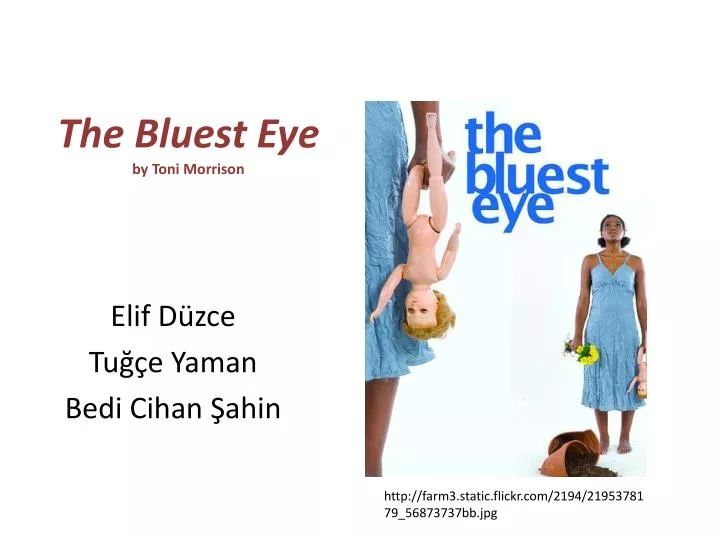

… But the dismembering of the dolls was not the true horror. To see of what it was made, to discover the dearness, to find the beauty, the desirability that had escaped me, but apparently only me. The first-person narrator for several sections of the book is Claudia, who is given white-skinned baby dolls, understands what such dolls represent, and rejects it: These things aren’t independent of each other, of course the point here is that that which is privileged is understood as worthy of love, and the effects of these assumptions are seen in every character in the novel. This functions both as a critique of privilege, playing as it does on cultural stereotypes about the family, and also introduces in a very simple way what will be complicated later, the need to be loved and valued. They are very happy.” This idealized conception of a family, of course, contrasts strongly with the complicated and marginalized families we see throughout the novel. Mother, Father, Dick, and Jane live in the green-and-white house. Morrison uses a sequence that reads as if it was lifted from a very simple children’s book to begin the novel and again, in pieces, as chapter headings: “Here is the family.
The beauty standard is part of this, but it’s far from the only part. However, the other effect of this strategy is that it gives the reader a look at how the simmering rage is passed down from one character to another. In the edition of the book that I have, Morrison explains that the purpose of this structure was to steer the reader toward self-examination rather than pity, but that in her opinion this was not successful. Only at the beginning and the end of the novel do we see things from her point of view. Rather, it comes at her indirectly, mostly through the perspectives and the backstories of other characters. And then, on the other hand, while Pecola emerges as the central character by the end of the book, the narrative does not spend most of its time on her directly. However, the novel is not about her wish for blue eyes this is merely the culmination of everything that she has endured throughout the novel. The title refers to Pecola Breedlove’s desire for blue eyes, indicative of her acceptance that her body, that of a twelve year old African American girl, is unacceptable. I’ve typed and erased a few sentences that try to give a general idea of what the book is about it’s complicated enough to make a quick summary difficult. I’ve really struggled with writing this post and I know that in a lot of ways I’m just rehearsing what is most obvious about this book-but I take comfort in knowing that Morrison is difficult to write about. So, although I knew that this book was concerned with the racist beauty standard, that was really all I knew about it when I started reading. I’d read Beloved, which is a very challenging book, but other than that, I’m not familiar with Morrison’s work. Unlike a few of the other books this year, and unlike some other participants, I hadn’t read The Bluest Eye before. Library of Congress Call Number: PS3563.O8749B55


 0 kommentar(er)
0 kommentar(er)
